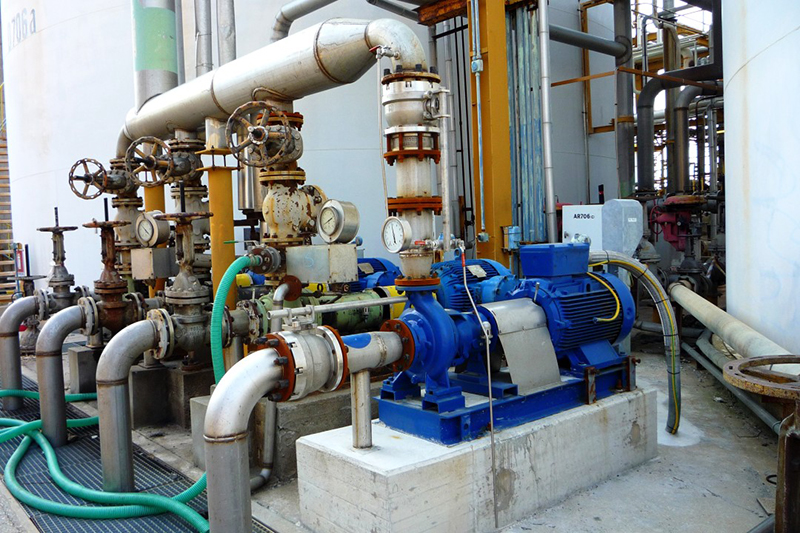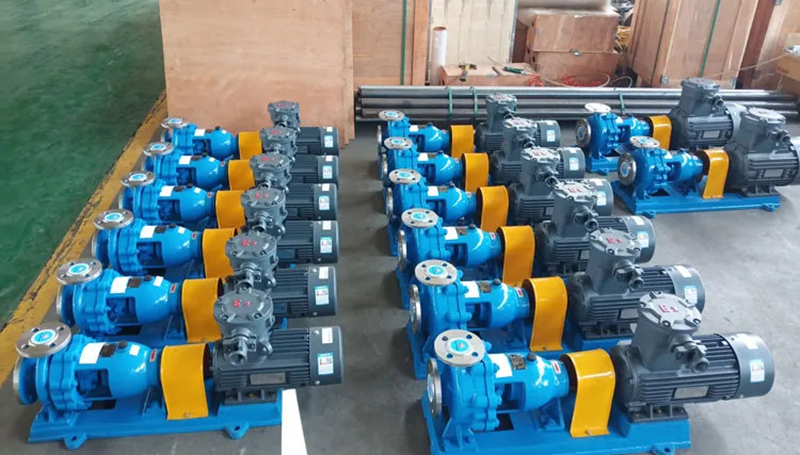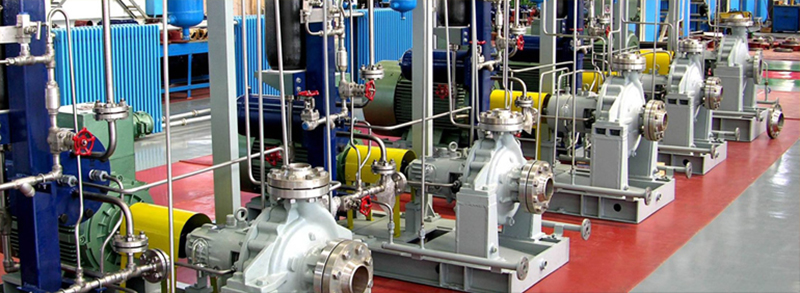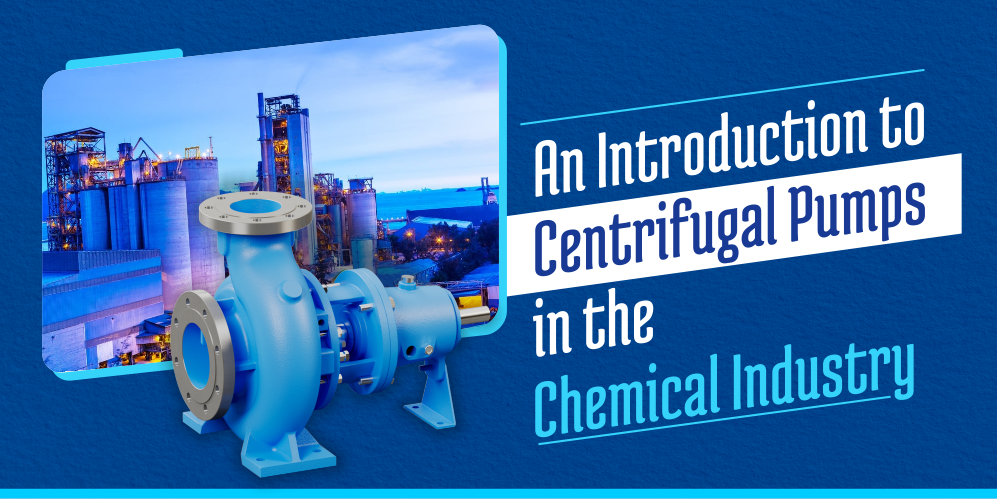Centrifugal Pumps, especially centrifugal chemical pump, plays a vital role in the chemical industry, given the high demand for their services.
The potential risks associated with chemicals cannot be underestimated, considering their toxic, corrosive, and volatile nature. They can lead to numerous health hazards and legal issues and threaten the environment and food chain. Thus, handling and transporting chemicals require high care and caution. The implementation of adequate safety measures is essential to ensure the protection of both individuals and the environment.
Strict adherence to the proper protocols and regulations is necessary when dealing with hazardous chemicals to avoid unwanted outcomes. In short, ensuring the safe handling and transportation of chemicals is paramount, and all the required measures must be taken to prevent mishaps.
Pumps, especially centrifugal chemical pump, plays a vital role in the chemical industry, given the high demand for their services. Industries dealing with hazardous and aggressive chemicals, including toxic acids and explosive and flammable liquids, rely on pumps for safe and efficient transfer. At JEE Pumps, our pumps’ exceptional performance provides optimal protection for employees and the surrounding work environment.
Our extensive product range enables us to offer tailor-made solutions for dosing, liquid transfer, and circulation to suit specific requirements. In addition, our reliable and efficient pump solutions ensure that the chemical industry operates safely and efficiently, meeting all the necessary safety standards.
Understanding Centrifugal Chemical Pump
Centrifugal chemical pumps have been widely used in chemical industries to transfer corrosive liquids. These pumps operate based on Bernoulli’s principle, where the fluid leaving the outer diameter of the impeller enters the internal casing wall and collects in an ever-expanding exit chamber. This results in the conversion of velocity into pressure at the discharge nozzle, with the impeller diameter and motor speed remaining constant. As a result, centrifugal pumps can be considered continuous pressure devices, making them an ideal choice for the chemical industry.
There are various advantages of using a centrifugal pump in industrial applications. These pumps operate efficiently at medium to low head pressures and can handle large volumes of liquid. Moreover, centrifugal pumps are compact, which makes them space-saving and cost-effective. They require minimal maintenance and pose no danger if the discharge valve is closed during start-up.
Centrifugal pumps can efficiently transfer medium to low viscous fluids with continuous pulsation-free delivery. Additionally, they have less wear and tear even when handling abrasive and corrosive liquids. These features make centrifugal pumps a preferred choice in many industrial applications.

Functions of Various Parts of Centrifugal Chemical Pump
-
Shaft:
The shaft is a central component of a centrifugal chemical pump that transmits power from the motor to the impeller. It is typically made of high-strength steel to withstand the forces generated by the pump’s operation. Bearings support the shaft to reduce friction and maintain alignment, ensuring efficient and reliable operation. The shaft’s design must also consider the pump’s speed, pumped fluid, and operating environment to ensure it can handle the load without failure.
-
Impellers:
One of the main components of the centrifugal pump is the impeller. It is responsible for converting mechanical energy into kinetic energy required to move the fluid. Impellers are typically made of materials such as stainless steel or bronze and have a specific number of blades or vanes designed to direct the fluid flow. The impeller’s design is critical to the pump’s performance, as factors such as blade shape, number, and angle can affect its efficiency, flow rate, and pressure.
-
Casing:
The casing is the stationary outer shell of a centrifugal chemical pump that encloses the impeller and other internal components. It is typically made of cast iron or stainless steel and is designed to withstand the pressure the pumped fluid generates. The casing also guides the fluid flow through the pump and out of the discharge nozzle. The casing’s design must consider the pump’s speed, pumped fluid, and operating environment to ensure efficient and reliable operation. In some cases, the container may also be designed with features such as volutes or diffusers to enhance the pump’s performance.

Usage of Various Casings in Centrifugal Chemical Pumps
Volute casing, also known as Spiral Casing, is commonly used in centrifugal pumps. It encloses the impeller and has a spiral shape that gradually expands to create a larger cross-sectional area. This expansion of the casing causes the velocity of the water to decrease and its pressure to increase. As a result, the spiral case helps improve the centrifugal pump’s overall efficiency by minimizing the amount of energy lost due to friction and turbulence.
Vortex casing, on the other hand, is a circular chamber that sits between the impeller and the volute casing. This curved casing creates a swirling motion in the water as it flows through it. This swirling motion helps to convert the velocity energy of the water into pressure energy, which can then be used to drive the flow of water through the pump. By utilizing a vortex casing, the efficiency of the centrifugal pump can be increased, resulting in higher flow rates and more significant energy savings.
Both volute and vortex casings play an essential role in the performance of centrifugal pumps. By using these casings, the energy of the water can be harnessed more effectively, resulting in higher flow rates, greater efficiency, and reduced energy consumption.
How to Operate a Centrifugal Chemical Pump?
Centrifugal pumps operate on the principle of force vortex flow, which involves using an external torque to increase the pressure head of a rotating liquid. This pressure increase is proportional to the liquid’s velocity and is highest at the impeller outlet, where the liquid is discharged at high pressure. The resulting high-pressure head allows the displaced fluid to be lifted to great heights in a centrifugal pump system. Therefore, understanding the operating principles of centrifugal pumps is crucial for effectively troubleshooting and maintaining industrial pumps.

The Significance of Centrifugal Chemical Pump Priming: Enhancing Operational Efficiency
Priming is fulfilling the casing, delivery valve, and suction pipe, casing of a centrifugal chemical pump with liquid from an external source before starting the operation. The purpose of priming is to raise the liquid in the pump to a level where the impeller can generate sufficient pressure to operate effectively. In a centrifugal pump, the stress in the impeller is directly related to the density of the liquid. Therefore, if the impeller runs with air inside, the generated pressure is negligible, which is unsuitable for operation. Consequently, it is crucial to prime the pump to avoid this scenario and ensure it can cause sufficient pressure to operate efficiently.
Centrifugal Pumps for Maximum Efficiencies
Centrifugal chemical pumps offer the efficiency and reliability required in various industrial applications. Their ability to pump corrosive and abrasive fluids over long distances with high flow rates and head pressures makes them essential in chemical manufacturing, oil and gas, and pharmaceuticals. Selecting the appropriate type of centrifugal chemical pump for a specific application is critical to ensure optimal performance. Regular maintenance and proper handling are also crucial to prolong the lifespan and maintain efficiency. In conclusion, centrifugal chemical pumps are an indispensable tool in many industrial processes and will continue to play a significant role.
Comments are closed.

